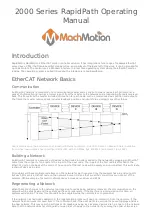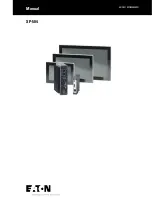
5
English
INTroDUCTIoN
All users must read these operating
instructions carefully prior to the initial
operation. These instructions are intended to
acquaint the user with the product and enable
him to use it to the full extent of its intended
capabilities. The operating instructions contain
important information on how to handle the
product in a safe, correct and economic way.
Acting in accordance with these instructions,
helps to avoid accidents, reduce repair costs
and downtime and to increase the reliability
and lifetime of the product. The operating
instructions and the accident prevention act is
valid for the respective country and area where
the product is used. And also the commonly
accepted regulations for safe and professional
work must be adhered to. The user is
responsible for the proper and professional
instruction of the operating personnel.
The personnel responsible for operation,
maintenance or repair of the product must
study and follow the instructions of this
manual. The indicated protective measures
will only provide the necessary safety, if the
product is operated correctly and installed and
maintained according to the instructions. The
user is committed to ensure safe and trouble-
free operation of the product.
TEMPErATUrE LIMITS IN EXPLoSIVE
ATMoSPHErES AND DUSTS
The temperature range refers to -10°C up
to +40°C. In case of deviating loadings or
temperature ranges consult the manufacturer
or supplier.
Units for operation in areas with
potentially explosive gases / air resp.
steam / air atmospheres or inflam-
mable mist
In explosive areas, caused by flammable gases
or liquids, the ignition temperature (lowest
temperature at a hot surface) must not be
exceeded. In exceptional cases the surface
temperature must not exceed 80 % of the
ignition point of the gas in °C.
Units for operation in dust / air
atmospheres
In areas, which are explosive by inflammable
dusts, the surface temperature must not
exceed ⅔ of the minimum ignition point in
°C of the dust/air mixture. Temperatures
of surfaces, which can be subject to dust
deposit, must be one safety margin lower
than the minimum ignition temperature of
GB
the layer which can possibly be generated by
the respective dust.
This requires a safety margin of 75 K between
the minimum ignition point of a dust deposit
and the surface temperature of the unit. If the
dust deposit exceeds a thickness of 5 mm,
larger safety margins are required.
Classification of the units
If used in accordance with their intended use
(correct operation), the units have no source
of ignition. Therefore, no identification must be
made. Various measures (e.g. buffers, trolley
wheels of bronze) have been taken against
any sources of ignition which may be caused
by the user as a result of misuse.
The documents have been checked by a
nominated body (0035) and deposited at
TÜV Rheinland Industrie Service GmbH,
Am Grauen Stein, D-51101 Köln, Germany.
IDENTIFICATIoN
In order to exactly identify the product, you will
find the identity plate with all pertinent data
on the side plate.
In case of queries with regard to handling
the product, which are not covered by these
operating instructions, please contact:
Yale Industrial Products GmbH
Am Lindenkamp 31 · D-42549 Velbert
Tel.: 02051/600-600 · Fax: 02051/600-127
www.yale.de · email: [email protected]
SPArK ForMATIoN
HTP/HTG trolleys have been designed exclu-
sively for overhead horizontal moving of loads.
Note:
Trolleys must be provided with buffers.
Any different or exceeding use is considered
incorrect and Yale Industrial Products GmbH
will not accept any responsibility for damages
resulting from false application. The risk is
solely with the user.
Materials subject to danger of friction
and impact
Increased danger of ignition may emanate
from clashing of special material pairings.
These are non corrosion-resistant steel or
cast iron against aluminium, magnesium or
pertinent alloys. This applies especially in case
of rust (e.g. surface rust). For correct operation
of the product, it must therefore be ensured
that there is no rust at these wear points
and that in the application area there are no
material combinations of the above-mentioned
aluminium alloys and steel (exception: antirust
steel) at possible friction, impact or grinding
points. Thus spark formation by these material
combinations as a result of mechanical impact
can be excluded.
Hand chain
Always ensure that hand chain and load are
guided to exclude grinding or sliding contact
with external constructions or components.
Depending on the degree of corrosion, the
conductive discharge capability of hand chains
can worsen to an effect that it is not adequate
any longer. For operation this means that rusty
hand chains must no longer be used.
Note:
The user has to operate the unit to avoid
sparking from the hand chain.
HTP/HTG models must always be operated
from below.
For additional safety and to avoid sparking by
impact or friction during operation, the units
are equipped with stainless steel hand chains.
Trolleys are provided with solid bronze wheels
and buffers.
Attachment points
Attachment points have to be selected to en-
sure that the expected forces can be safely ac-
cepted. The unit must move freely under load
in order to avoid incorrect additional loading.
STATIC ELECTrICITY
When cleaning these components, make sure
to apply only materials which do not allow
electrostatic charging.
TrANSPorT AND STorAGE
Safe transport
During transport of the unit, observe the
following:
- Do not throw the trolley down. Always
place it properly on the ground.
- Hand chains must be transported in a
way to avoid knotting and formation of
loops.
INITIAL oPErATIoN
Inspection prior to initial operation
Hoists including carrying construction have
to be inspected prior to initial operation and
after each essential alteration by a competent
person*.
The inspection covers the appropriate instal-
lation and readiness for operation.
*A competent person is a person with profes-
sional training, experience and actual opera-
tion to provide the necessary expertise for the
inspection of material handling equipment.
CorrECT oPErATIoN
- The unit is designed for moving suspended
loads up to the indicated capacity.
- The capacity indicated on the unit is the
maximum working load limit (WLL) that may
be attached.
Содержание HTP 500 ATEX
Страница 8: ...8 Fig 1 Fig 2 Fig 3 Fig 4 Sachwidrige Verwendung Incorrect operation D GB...
Страница 12: ...12...
Страница 13: ...13...


































